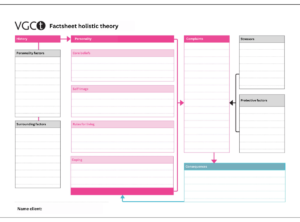Author: Joost Bloom
PsyGlobal Recruitment Process Outsourcing
PsyGlobal matcht anderstalige ggz-professionals met Nederlandse organisaties. Op het moment dat een Nederlandse GGZ-instelling, huisartsenpraktijk, gemeente of GGD op zoek is naar een anderstalige professional kunnen wij ingeschakeld worden. PsyGlobal heeft inmiddels een pool opgebouwd van goed gekwalificeerde ggz-professionals die op korte termijn geplaatst kunnen worden als basispsycholoog, POH-GGZ, social worker of counselor. PsyGlobal ontzorgt organisaties in het proces van werven, selecteren, matchen en plaatsen, ook wel Recruitment Process Outsourcing (RPO) genoemd.
In dit artikel beschrijven we wat RPO precies is, wat de voordelen zijn van deze manier van werken, en hoe RPO met PsyGlobal er uit kan zien.
RPO 101
RPO, of Recruitment Process Outsourcing, is het overdragen van de verantwoordelijkheid voor het wervingsproces van een werkgever aan een externe specialist. Deze externe dienstverlener (in dit geval PsyGlobal) neemt verantwoordelijkheid voor het werven en selecteren van kandidaten namens de organisatie. De externe specialist voert taken uit als het plaatsen van vacatures, het screenen van cv’s, het uitvoeren van screening interviews, het coördineren van sollicitatiegesprekken en het afhandelen van de administratieve processen die verband houden met de werving van personeel.

In het specifieke geval van PsyGlobal wordt niet alleen de werkgever ondersteund in het proces, maar ook de kandidaat. Zo geven we informatie over het proces van diploma validatie. Daarnaast helpen we de kandidaat bij het maken van een cv en in de voorbereiding van een interview. Tenslotte organiseren we intervisie en bieden we opleidingen en trainingen aan die van pas komen in hun toekomstige werk. Denk hierbij aan trainingen in Cognitieve Gedragstherapie (CGT), EMDR of Schema Focused Therapy (SFT), maar ook webinars over bijvoorbeeld beroepsethiek in Nederland.
Voordelen van RPO
Een eerste voordeel van RPO is tijdwinst. De externe recruiter neemt een groot deel van de werkzaamheden uit handen. Het vinden van kandidaten, het screenen, een eerste interview, het plannen van verdere gesprekken met de organisatie en indien nodig de onderhandeling met de kandidaat. En vervolgens ondersteunen we in administratieve taken als contracten en het verzamelen van de vereiste documentatie en indien nodig achtergrondcontroles. Behalve een significante tijdwinst, heeft RPO nog vele andere voordelen:
Omdat de externe specialist veel kennis heeft van de markt (en in het geval van PsyGlobal zelfs een pool van geschikte kandidaten) is werving vele malen efficiënter, sneller en daardoor voordeliger. PsyGlobal biedt de garantie dat ‘onze’ kandidaten beschikken over de juiste kennis en kunde en voldoen aan alle vereisten om werkzaam te mogen zijn in Nederland en in de specifieke functie waar het om gaat. De kwaliteit van de kandidaat is dus gegarandeerd. Bovendien bieden we ondersteuning in de onboarding, wat weer significante tijdwinst, maar ook een succesvolle integratie in de organisatie oplevert.
Tenslotte biedt RPO via PsyGlobal nog een specifiek voordeel, en dat is cultuursensitieve recruitment. Onze recruiters spreken de taal van de kandidaten en kennen culturele nuances die in het recruitmentproces van belang kunnen zijn. Er is geen kans op verwarring door taalbarrières of misverstanden door culturele verschillen. Bovendien kennen onze recruiters de kandidaten vaak persoonlijk, vanuit een sociaal netwerk, wat de kans op een goede match vergroot.
Hoe ziet Recruitment Process Outsourcing er bij PsyGlobal uit?
Als u de wens heeft om een internationale ggz-professional aan te nemen, kunt u contact opnemen met PsyGlobal. U kunt hier direct een afspraak met ons inplannen.
Tijdens deze afspraak gaan we samen kijken wat uw wensen en voorkeuren zijn. Na de afspraak stellen we een opdrachtbevestiging voor u op. In deze Bevestiging van Opdracht herhalen we uw wensen herhalen en leggen we de volgende stappen aan u uit. Als u hiermee akkoord bent, gaan wij aan de slag met het vinden van de juiste kandidaat voor uw organisatie. Dit kan snel, omdat we inmiddels een uitgebreide database hebben met een groot aantal goed gekwalificeerde psychologen uit verschillende landen.
Op basis van uw wensen (taal, ervaring, beschikbaarheid, locatie en doelgroep) leggen we u de – volgens ons – best passende kandidaat aan u voor, middels een anoniem cv. Met deze kandidaat plannen we voor u een online sollicitatiegesprek in. Als er een match is, gaan we met die kandidaat verder in het proces. Zo niet, dan zullen we u een andere kandidaat voorstellen, tot er een match is.
Zodra er een match is, kunt u de kandidaat zelf in dienst nemen of kiezen voor een uitzendingsconstructie. In dat laatste geval stelt PsyGlobal een inleenovereenkomst voor u, en een arbeidsovereenkomst voor de kandidaat op. De kandidaat komt dan dus in dienst bij PsyGlobal en wordt aan uw organisatie uitgezonden. PsyGlobal zal altijd marktconform inschalen volgens de geldende CAO waarbinnen de kandidaat gaat werken. Vanaf dat moment kan de kandidaat worden ingezet bij uw instelling.
We zetten kandidaten voor minimaal acht uur per week in bij organisaties, maar we streven naar minimaal 24 uur per week.
Hoe verder?
Als er een anderstalige ggz-professional gestart is bij uw organisatie blijft PsyGlobal nauw betrokken, zowel met de kandidaat als met uw organisatie. We bieden de professional regelmatig trainingen en intervisie aan, en nemen op gezette tijden contact met u op om te horen hoe de samenwerking gaat.
Het kan natuurlijk voorkomen dat de samenwerking niet goed verloopt, of dat de kandidaat toch geen juiste match is voor uw organisatie. Op dat moment gaan we in overleg op zoek naar een nieuwe match. Wij bieden u daarbij een garantieperiode van 6 maanden, waarin wij kosteloos een vervangende kandidaat voor u zoeken.
Wilt u ook samenwerken met een internationale ggz-professional binnen uw organisatie? Neem dan vrijblijvend contact met ons op. Plan hier een afspraak in met onze accountmanager.
Bronnen:
https://www.randstadsourceright.com/our-solutions/rpo/what-is-rpo/
https://hetrecruitingkantoor.nl/vraag-antwoord/wat-is-recruitment-process-outsourcing/
https://mijnsalesrecruiter.nl/recruitment/proces/outsourcing-rpo/
Coming to work in mental health care in the Netherlands (3)? Diagnosis and treatment
No matter how many years of experience you have in the field of mental health, (re-) starting your career in a new country is always challenging. PsyGlobal wants to guide you in this challenging process, to make sure your landing will be as soft as possible.

We interviewed Dutch professionals Wendy Weijts, clinical psychologist and psychotherapist, connected to WorldPsychologists, and teacher at RINO Amsterdam and Myra Haakman, psychologist, psychological lead at PsyGlobal, and co-founder of WorldPsychologist, about the Dutch vision on mental health care. In the first articles, we talked about structure and a professional relationship and the intake session. In this article, we talk about the diagnosis, treatment plans and closure.
The diagnosis and mutual understanding of goals
After the intake session, you’ll most likely be asked to set a diagnosis, together with your supervisor. You’ll set a diagnosis according to the DSM-5, together with a descriptive diagnosis. This descriptive diagnosis always includes the clients gender, age and the reason why they are getting treatment. For example: “Client is a 37-year old woman with a history of personality disorders. She is currently presenting increased depressive symptoms due to a life-event (divorce). Symptoms are worsened due to self-isolation and overall avoidance.”
This diagnosis leads to a certain treatment plan that has a clear start and finish. In the Netherlands, this diagnosis is always shared with the client due to insurance matters. This is done in the first meeting after the intake. You share the diagnosis and the treatment plan that you and your supervisor decided on. Clearly explain why this is the diagnosis according to you, how you are going to work together to treat it and what realistic goals can be set. This is a very important step in the process: the client must fully understand what the plan is from now on. Make sure there is mutual understanding about those goals and the path towards them.
Setting realistic goals is very helpful in keeping structure. Everything you do in the therapy sessions should be aimed towards reaching those goals.
The diagnosis is what you are going to treat
The diagnosis is set following a diagnostic decision tree. The DSM-5 serves as a guideline in this process. The order of the treatment is important here. In general, you will prioritize the most severe or acute problems and then proceed to evaluate other possible disorders. This may mean that substance use disorders or severe psychotic disorders are assessed first, followed by other disorders such as mood disorders, anxiety disorders, and personality disorders, and finally, behavioral issues or adjustment disorders.
It is possible that there is more than one diagnosis. For example, trauma and depression. However, it is important to only put a diagnosis on the issue that you are actually going to treat. If you set a diagnosis, you are going to have to treat it. That might mean that you are first (and sometimes only) going to work on a trauma, while your client also has a personality disorder. It is however important to take everything a client is dealing with into account, since it might have an effect on a treatment plan. For example, if a client is autistic and has a depression, the treatment for the depression has to be adjusted. Or, another example, if the personality disorder has affected the trauma, this has to be taken into account.
The holistic theory on diagnoses
Looking at the interconnectedness of your client’s issues, as mentioned in the two examples above, is an example of a holistic approach. It’s used to gain a better understanding of the relationship between the client’s development, personality, and the symptoms they experience. It’s also very helpful to explain to your client how certain issues interconnect. And how, for example, certain behavior from their childhood, keeps them from healing.

![]() A possible model to use for the holistic theory consists of three parts:
A possible model to use for the holistic theory consists of three parts:
- The head: structural vulnerabilities or history. This consists of personal factors (genetics) and surrounding factors (the context of the family – cultural background, how someone was raised, childhood trauma)
- The middle: personality traits or instrumental vulnerabilities. These entail relatively fixed beliefs that someone holds about themselves, the world, or others.
- The tail: complaints and problems. What is the main complaint and what perpetuates what.
If you click here, you can download a worksheet for the holistic theory, developed by the VGCT and translated into English.
Structured treatment plans
The diagnosis and the treatment plan set the structure for the treatment. There are protocols available for the process and guidelines for the number of sessions per diagnosis. Every process has a clear start and finish. Make sure to stick to this process as much as possible. It is well thought-through and very helpful for you as a therapist, as well as for the client: Everybody knows what is expected. Of course, there is some room to deviate. For example, when something intense happened in the client’s life, there is space to talk about that in the session. However, we really encourage you to return to the initial plan every time. For example, take ten minutes to talk about the current situation, and return to the plan for today after that.
Once again: a therapist in the Netherlands does not take over control. They set the structure, the framework, they will guide, but the client is in charge. You will be in this together.
Evaluation and closure
It can be very difficult to end a therapy process. There is always room to improve more, even though the initial goals are reached. If you use a certain protocol, closure is easier since you slowly reach the end of the process. But also if you are not following the protocol, there is still a guideline for the number of therapy sessions attached to a certain treatment plan. Or you make a plan with your client: how many sessions do you both think are necessary to reach a certain goal? You can also always emphasize on the insurance matter again; in basic GGZ, the insurance often only covers a certain number of sessions.
Make sure to announce in advance that the end of the treatment is approaching. Tell your client that you have reached the final step in the protocol, that there remain – for example – four sessions. Your client will feel more pressure to work towards their goals, there is a sense of urgency.
The closure comes with an evaluation. The intake form is used to evaluate the treatment, together with the questionnaire(s) that you used at the start of the treatment. Focus on the initial diagnosis and the goals that you agreed on at the start. There is probably always more to work on, but that was not part of this specific treatment plan. Celebrate the goals that you’ve reached together. The client can be very proud of what they achieved!
To conclude
We all agree that it’s very challenging for foreigners to come to work in a local environment. There’s the language, cultural differences, protocols, specific ways of working.. With these articles, we hope we have given you some tools to kickstart your work journey here. In addition to these articles, we have written extensive guidelines about working in the Netherlands; from peculiarities about the Dutch culture to roles and responsibilities within Mental Health Care. The guidelines can be found here.
Please remember that PsyGlobal is here for you. There is no such thing as a stupid question, and we are available to answers yours anytime. You can also participate in intervision sessions to exchange experiences and ideas with us and fellow foreign mental health professionals, attend webinars or enroll for trainings. We will update you regularly through LinkedIn or our newsletter. Thank you for being part of PsyGlobal, and good luck!
Coming to work in mental health care in the Netherlands (2)? The Intake Session
No matter how many years of experience you have in the field of mental health, (re-) starting your career in a new country is always challenging. PsyGlobal wants to guide you in this challenging process, to make sure your landing will be as soft as possible.

We interviewed Dutch professionals Wendy Weijts, clinical psychologist and psychotherapist, connected to WorldPsychologists, and teacher at RINO Amsterdam and Myra Haakman, psychologist, psychological lead at PsyGlobal, and co-founder of WorldPsychologist, about the Dutch vision on mental health care. In the first article, we talked about structure and a professional relationship. In this article, we talk about the intake session. An article about the diagnosis, treatment plans and evaluation will follow.
Everything starts with a good intake
In Mental Health Organisations (curative clinical care – GGZ)*, the first session with a new client lasts 60 minutes. This intake is often done by you as the basic psychologist, and your supervisor might join in the last 15 minutes to get a feeling with the client as well. In these 45 or 60 minutes, the most important role of a therapist is to ask questions. Some psychologists have their own ‘intake format’ that lists important questions. This is up to you. It can however be helpful to work with standardized questionnaires, to make sure you don’t miss anything.
Steal with pride
We asked Myra and Wendy to share some of the questions from their intake format. Feel free to pick the ones that resonate. They might come in helpful.
First, it’s important to clarify the client’s issues. Always keep the DSM-5 in the back of your mind when clarifying these:
- How come you are here today? What makes you come to seek help specifically today, instead of two months from now, or two years ago?
- Can you describe your challenges / issues?
- How did these issues become problems now?
- How do you deal with your challenges / issues? What do you do to cope with them?
- If you were your own therapist, what would you advise yourself to do?
- How would somebody else explain your issues? (Your mum, partner, friends)
It’s also important to get to know the client:
- Can you tell me something about yourself? What do you do in your day-to-day life? How is your family situation? Do you have friends with whom you can talk about your problems?
- Who knows you are here today?
- Who supports you?
- When you are not feeling well, how can I see that?
- Is it difficult for you to ask for help?
- Do you drink alcohol, use drugs, or take medication?
- Do you notice physical problems that are or might be related to your mental problems (somatic)?
Learn about their past:
- Have you been diagnosed before? Are there any mental problems in your family?
- Have you had treatment before? What worked and what did not?
- Did you ever take medication before? Did that help?
- What have you done yourself to cope? What worked?
- Have you ever attempted suicide (before)?
And finally, it’s important to understand your client’s goals:
- If this treatment is done, what has changed?
- If you wake up tomorrow and a miracle has happened, what has changed? What do you do that’s different from what you do today? How would you notice that something has changed?
- Is there a parallel goal you want to accomplish besides solving your mental issues? For example: find a job, a new house, get married, change the relationship with friends / family.
- What is your goal for this treatment? (There might be more than one issue, but it is not said that the client wants to work on every issue.)
Setting goals is probably the most important, but also most difficult. If you set goals with your client, make sure to make them SMART. They must be realistic. If you don’t think they are, be honest about it. That also helps in growing trust.
Some Mental Health Organisations use their own standard questionnaires for intake sessions, also to measure effectiveness of the treatment. You will use the same questionnaire at the start and at the end of the treatment. An example of such a questionnaire is the ROM, the Routine Outcome Monitoring. The ROM used to be mandatory for insurance. This is no longer the case, but it can still be useful.
Insurance Matters
Working in curative clinical care (GGZ)* in the Netherlands means you have to deal with your client’s insurance and other stakeholders. That means that certain steps in the process are mandatory to take. Let’s put those chronologically:
- A client comes to you with a referral from their family doctor. After the intake session, you have to send a letter back to the family doctor to report about the client. The content of the letter should always be discussed with the client, before you send it.
- After you set a diagnosis, you have to share this with the insurance company. This is done through the HoNOS+. This is a questionnaire from the ZPM (Zorgprestatiemodel – Care Performance Model) and it stands for ‘Health of the nation outcome scale’. The only thing that you share with the insurance is the so-called ‘Zorgzwaarte’, the intensity of the care. Everything else is private information.
- Together with your client and your supervisor, you finalize the treatment plan.
- It’s also important to keep in mind that your client has to be seen by your supervisor (the ‘regiebehandelaar’), at least once within the first four sessions, and after that at least once a year. This is also due to insurance matters.
After the intake session, you’ll most likely be asked to set a diagnosis, together with your supervisor. We’ll dive into this process in the next article.
* if you work in a municipality or preventive care, the ‘rules’ in this article often don’t apply. However, it could be very useful to keep them in mind in your work, as they might help you to structure your sessions.
Do you want to read more about working in a merely Dutch culture? We have written another article about stereotypes in the workplace. You can find it here.









